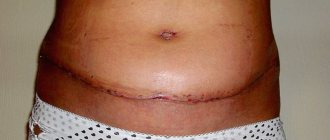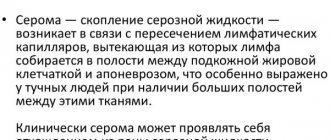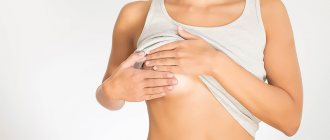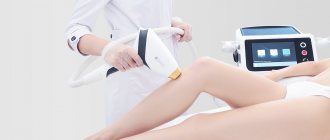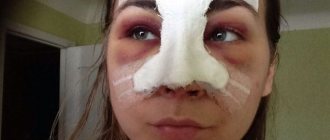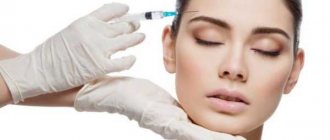As a rule, a cesarean section in most cases ends with the application of external cosmetic sutures, which heal with the formation of an invisible and thin scar. In this case, the duration of the recovery period, as well as the quality of the resulting scar, will largely depend on the care of the cut surface. Complications of cosmetic stitches after cesarean section are very rare, but can be successfully eliminated if you seek help from a specialist in time. Over time, the external scar can be corrected using hardware, cosmetic, and surgical procedures. In this article we will get acquainted with the features of cosmetic stitches after cesarean section, photos, as well as care features. But first you need to understand what this operation is.
C-section
Caesarean section is an abdominal operation, which is accompanied by sequential dissection of layers of soft tissue. As a rule, after the fetus is removed, the soft layers of tissue are connected using suture material.
Almost always, the edges of the external incision of the abdominal anterior wall are fixed by applying a cosmetic suture after a cesarean section. After healing of this suture, an invisible and thin scar appears. In most cases, it does not cause any discomfort to the patient, either psychological or physical.
How long does a caesarean section last? As a rule, this procedure takes about 30-40 minutes. However, please note that if this is not the first such operation, the duration may be longer. Therefore, it is impossible to definitively answer the question of how long a caesarean section lasts.
The art of the perfect cut
In facial plastic surgery, it is important not only to have a thorough knowledge of anatomy (an understanding of how this entire complex complex of muscles, ligaments, bones, fat layer and skin works). It is very good to have an innate “feel for tissue” - an intuitive sense, which (as I see in the example of my students) is not inherent in every plastic surgeon.
The location of the incision and its size must be accurately verified. Precision is especially important when creating an incision in front of the tragus of the ear - in this area, the relatively thick skin of the cheek passes into the thin, delicate skin of the pre-auricular area. An error of just a couple of millimeters - and the magical effect of “invisibility” of the plastic surgeon’s work will inevitably be lost! If you have ever done handicrafts, you will understand what we are talking about.
Varieties of external seams and cuts
Regardless of location, size, and other factors, the dissection of the outer tissue may be transverse or longitudinal. A longitudinal section is also often called a vertical section. In medicine, it is called a “corporal caesarean section”. Such an incision is made along the entire surface of the abdominal wall, starting from the navel and ending with the pubis.
This type of operation is used only in emergency cases when the patient or fetus requires emergency care. In such a situation, due to the high risk of muscle tissue divergence during exercise, their integrity is restored with a simple, rather than cosmetic, suture. However, there are other indications for corporal cesarean section, which are as follows:
- Varicose veins in the lower part of the uterus.
- Pronounced adhesions, as well as the inability to penetrate the lower segment of the uterus.
- Significant prematurity of the baby, as well as the unpreparedness of the female body for childbirth.
- Planned excision of the uterus after surgery.
- The presence of a longitudinal scar after the planned operation.
- The need to extract a living fetus from a dying or dead woman.
- Fetal pathology, such as conjoined twins, transverse position and much more.
Today, in the case of uncomplicated planned cesarean section, laparotomy is most often used, which provides the best aesthetic effect with the highest scar strength. A large transverse incision is made in an arc above the pubis. The scar that forms after this action practically merges with the fold of skin in the lower abdomen, and most often it is difficult to distinguish.
Cosmetic stitch after caesarean section
The type of threads and technique for suturing the resulting wound are selected depending on the characteristics of the operation, as well as in accordance with some diseases or complications that the patient has. To apply a cosmetic suture after a caesarean section, atraumatic special needles are used, as well as other instruments used in the field of plastic surgery. As a rule, these instruments do not injure the skin and subcutaneous fatty tissue of patients. The material for suturing is a thin monofilament or polyfilament and thread made of silk, lavsan or synthetic material.
Today, subcutaneous sutures are most often used, which can dissolve on their own within a few weeks after surgery. If for some reason it is not possible to apply them, then the integrity of the tissue can be restored with non-absorbable threads. In this case, the ligature is removed approximately one week after surgery. Suture removal, as a rule, coincides with the day of discharge from the hospital for patients.
Types of sutures in surgery
Of all the surgical sutures, only a few are cosmetic. And the doctor does not always have the opportunity to apply them. After all, the elasticity of the skin and its surface tension depend on the operated area and the depth of the wound.
- Simple nodal. Rarely used due to visible cosmetic imperfections. The scar becomes rough and noticeable.
Technique for suturing a wound
- Continuous intradermal suture (cosmetic). One of the most frequently used due to its aesthetic and functional advantages. A thread (usually vicryl) is passed between the layers of the skin, maintaining the effect of oxygen microcirculation for speedy healing.
- Mattress horizontal. Multi-layered, so not cosmetic. It is used for wide wounds with far-retracted edges.
- Mattress vertical. The difference from a horizontal seam is that this type can be classified as cosmetic, because it is performed using a special technology. Every second stitch is as close as possible to the edge of the wound, so it is invisible.
- Aponeurosis suture. It is applied at the site of fusion of tendon tissue (for example, on the abdomen during hernia surgery). It cannot be considered cosmetic, because the purpose of such stitching is to ensure a strong and strong connection through knots (tightening loops).
When assessing a wound, the surgeon first tries to determine whether a cosmetic suture will fit. Moreover, it does not matter on what part of the body the operation is performed, and what gender the patient is. And the saying “scars make men beautiful” is inappropriate here, because the doctor always tries to minimize the visibility of the scar.
Therefore, conventional surgical sutures are used only in extreme cases when it is not practical to risk aesthetics due to a complex or deep wound. Also, depending on the situation, the surgeon chooses which suture materials to use, i.e. Will these be self-absorbing sutures, or will they have to be removed after some time?
Seam features
What are the features of a cosmetic seam? This should include:
- Passes inside the skin.
- It is performed with special atraumatic needles, as well as very thin threads.
- It forms an invisible and thin scar that will not cause any discomfort to the woman.
- Almost invisible on the surface of the skin.
You can clearly see in the photo what a cosmetic seam looks like. During the application of this suture, the surrounding tissues are much less injured than in the case of using the conventional technique of suturing the layers of the skin. This method not only allows specialists to achieve maximum aesthetic results, but also significantly reduces the risks of developing all kinds of complications. In addition, such a cosmetic suture significantly speeds up the patient’s recovery. This is precisely the difference between a cosmetic seam and a regular one.
A postoperative thin scar is formed through the use of special self-absorbing threads: lavsan, silk, prolene or vicryl. Such materials can withstand heavy loads and also provide very reliable healing of postoperative wounds.
Features of cosmetic seams
A type of external sutures are cosmetic sutures; they are applied to the skin with very thin threads
. To apply subcutaneous sutures, absorbable materials are used, which are not removed after healing. Among surgeons and cosmetologists, an intradermal cosmetic suture is popular - in it, the edges of the wound adapt better, tissue microcirculation is less disrupted, which gives an excellent cosmetic result.
When connecting the edges of the wound, the thread is passed inside the skin parallel to its surface. Monofilament threads provide freer drawing. In cosmetology practice, not only absorbable threads are used: biosin, monocryl, vicryl, polysorb, dexon, but also non-absorbable ones, among them: monofilament polyamide and polypropylene. When applying polyfilament threads, it is recommended to bring the thread onto the skin through a 6-8 cm suture. After healing, the thread is easily removed between punctures in individual fragments.
Features of seam care
Many women who have undergone this type of operation are wondering how to treat the suture after a cesarean section, as well as how long the wound will take to heal. Provided there are no complications, superficial restoration of muscle tissue occurs within 2 weeks. The final scar is formed after 12-18 months. The duration of the recovery period will directly depend on the quality of care for the surface of the scar. That is why it is so important to know how and with what to treat the suture after a caesarean section.
Postoperative care
While in the hospital, specialists treat the surface of the suture daily with special antiseptic solutions, and apply sterile dressings made of breathable materials on top.
For several days after surgery, the woman should also take painkillers. In order to prevent the development of infectious and inflammatory processes, broad-spectrum antibiotics are prescribed.
Physical activity should be increased gradually, preventing possible damage to the ligature.
How to care at home?
In order to ensure normal tissue scarring after discharge, a woman must follow certain rules and recommendations, which are as follows:
- Before the cesarean section suture is completely healed, it must be disinfected. To do this, you can use chlorhexidine, hydrogen peroxide or any other antiseptics, but you should still consult your doctor in advance.
- You should also wear a special bandage after a caesarean section. It limits the mobility of soft tissues. In addition, a bandage after a cesarean section will eliminate the possibility of sutures coming apart.
- Several times a day it is necessary to take air baths, while exposing the lower abdomen.
- Strong physical activity should be limited, as well as lifting heavy objects weighing more than 2 kg. You need to take your baby in your arms, pressing it to your chest. During this action, the postoperative bandage discussed above should also be worn on the stomach.
- Mechanical impacts on the wound surface should be avoided. Therefore, there is no need to scratch or rub your stomach, use hard towels, cosmetics, or wear uncomfortable types of clothing with belts and tight belts.
- Showering is allowed only after the stitches have been removed.
- It is mandatory to monitor the restoration of the muscle layer and uterus using ultrasound within the time prescribed by the doctor.
In addition to the fact that it is necessary to put a postoperative bandage on the stomach, you should also smear the scar with olive, sea buckthorn and other oils. After consulting with a specialist, you can use Contractubex or Solcoseryl to speed up the healing process.
HOW TO TREAT THE SITE OF THE SEAMS AFTER ITS REMOVAL?
After removal, the surgical wound site can be treated with a solution of furacillin, brilliant green or hydrogen peroxide. The course of treatment is 4-7 days, until the wound surface completely disappears.
Sutures after surgery provide connection and fusion of tissues of various origins. It is necessary to properly treat the suture site in order to prevent the penetration of infectious agents. Antiseptic healing ointments will help ensure rapid healing. After healing, the suture should only be removed in the surgical department. It is not recommended to relieve shock yourself. This can lead to the development of inflammation, suppuration, swelling, etc.
Recovery after surgery
The duration of the rehabilitation period will largely depend on the individual characteristics of the female body, the professionalism of doctors, as well as on the quality of the surgical intervention performed. Despite this, for some time, most patients after a cesarean section may experience discomfort of varying nature and intensity. Normally, the following symptoms may occur, even if you know what a cosmetic stitch after a cesarean section is and how to care for it:
- Moderate pain in the anterior abdominal wall for 3-5 weeks.
- Dense and raised scar up to two months after surgery.
- Discharge of ichor, which is a yellowish or clear liquid, with a slight admixture of blood from the wound during the first week.
- Moderate skin itching for 2 weeks after birth.
If all of the above symptoms cause severe discomfort and anxiety to the patient, you should report them to your doctor. If itching, pain, burning, and discharge do not go away within the specified time or increase, then mandatory medical assistance will be required.
Behavior of the scar during subsequent pregnancies
During their second pregnancy, many women who have had a cesarean section report pain and a feeling of tightness in the scar area. Unpleasant sensations increase as the abdomen grows and are most pronounced at the ends of the arched scar. This is due to the denser structure of the skin and subcutaneous fat at the site where the threads pass and the formation of strong adhesions in the surrounding tissues.
If more than 2 years have passed since the previous operation, the scar is considered healthy and there are no contraindications for a new pregnancy, there is nothing to worry about. To soften and increase the elasticity of the skin, the scar can be lubricated with oil or ointments and gels recommended by the doctor. Do not forget that uncontrolled use of medications can seriously harm not only the expectant mother, but also the fetus.
Possible unpleasant complications
So, we have looked at how long it takes for a cosmetic suture to heal after a caesarean section. However, this time may be delayed if the patient experiences various types of complications. The early ones include the following:
- Inflammatory process in a wound after infection. As a rule, this is accompanied by swelling of the suture, suppuration, as well as swelling of the surrounding skin. In parallel with this, the patient’s body temperature rises, chills appear, and general health worsens.
- Divergence of the wound contour, as well as rupture of threads. In most cases, this occurs due to early removal of the threads, as well as high physical activity or injury.
- Hematomas and bleeding due to extensive damage to blood vessels or individual vascular diseases in a woman in labor.
All of the above early complications, as a rule, are diagnosed in a hospital setting or during the first days after the patient is discharged. Treatment will depend on the severity and nature of the pathology. Therapy includes the use of antibiotics, hemostatic agents, and additional suturing or dressing of the wound.
Most of the unpleasant consequences of a cesarean section appear a few months after birth. The most common late complication is the appearance of ligature fistulas, which are formed due to the reflection of the suture material by the human body, as well as infection of the thread. The symptoms will be as follows:
- Periodically appearing suppurations.
- Minor pain and redness in the scar area.
- The gradual appearance of several or one hole in the skin, in which ligature stitches can be seen.
If signs of ligature fistulas appear, you should immediately contact the clinic for surgical removal of the remaining threads, as well as for wound treatment.
As for the rarest complications, these include keloid scars and hernias, which are bulging soft tissue on the surface of the scar. Keloid scars do not pose any threat to the patient's health; they only cause cosmetic discomfort. As a rule, such scars appear only in those women who have a predisposition to severe tissue growth.
Re-suturing
In the most advanced cases, specialists are forced to completely remove the existing scar by reapplying the ligature. This will depend on how badly the muscle layers, skin and subcutaneous tissue have been damaged. Often, cosmetic stitches are replaced with regular ones.
The recovery period after another surgical intervention will be increased several times. In this case, you should pay attention to the fact that the re-formed scar will become the most convex, noticeable and rough. That is why, if any suspicious symptom occurs that indicates a violation of normal wound healing, you should seek help from the clinic, avoiding the occurrence of any serious consequences.
Scar correction
Even a well-made suture after a cesarean section will not guarantee the formation of a thin and neat scar in the future. Years later, some women complain of scars that are brightly colored, uneven in width, depressed or protruding. Fortunately, there are several correction methods, for example:
- Scrubbing and peeling using special cosmetics that can be used independently at home. They are allowed to be used only for external improvement of scars after consultation with a therapist or cosmetologist.
- Hardware polishing of the scar using abrasive attachments, which is carried out in specialized clinics. To achieve a lasting and visible result, a similar procedure should be carried out in several sessions.
- Laser resurfacing, which provides a deep effect on the scar and allows you to get rid of severe irregularities.
- Abdominoplasty, which is a surgical tightening of the abdominal muscles with the formation of new scars, but of a smaller size.
- Injections of drugs that prevent the growth of keloid scars.
- Massage. You should not expect a global effect from this procedure. However, slight improvement can be achieved. Special massage movements and creams will help enhance the softening effect and also reduce scars. The massage begins only after the stitches have completely healed, using smooth, gentle movements, lightly pressing on the scar with your fingertips. The procedure must be repeated several times every day for 5 minutes.
It is necessary to pay attention to the fact that these methods have a number of contraindications, and also do not allow a woman to completely get rid of the resulting scars.
STAGES OF SUMMER HEALING AFTER OPERATION
Healing of sutures after surgery is carried out in 3 stages.
At the first stage, the synthesis of connective tissue begins to increase from collagen fibers formed by fibroblasts.
At the second stage, epithelial cells change their localization, moving from the periphery to the center to the site of damage. These cells provide a barrier function, preventing microbes from entering the wound surface. The second stage ends by 4-6 days, if everything proceeds without complications.
At the third stage, complete closure of the wound defect occurs.
Important! Wounds should be treated only after cleaning the hands first with water and soap, then with alcohol. Tools must be disinfected before use.
Cost of cosmetic seam
How much does a cosmetic stitch cost after a caesarean section? As a rule, the cost will vary depending on the complexity of the operation, as well as the region and level of the clinic. Please note that in public clinics this procedure is carried out absolutely free. If we talk about paid clinics, then the cost here will be several thousand rubles.
In conclusion, it is worth noting that cosmetic stitches after caesarean section are increasingly performed not only in private clinics, but also in public ones. However, it is still worth checking with the surgeons in advance which sutures they will apply.
Is it possible to remove stitches yourself?
Doctors usually prohibit any influence on the suture, but patients still sometimes pull out the protruding threads. If they remain after the doctor removes the suture, then, as a rule, nothing bad happens. But if these are self-absorbing threads, then it is better not to do anything, but wait until they dissolve naturally.
Attention! Only a doctor knows how to remove certain stitches correctly and without negative consequences! Therefore, it is better not to do anything on your own. In addition, in non-sterile home conditions, there is a high risk of infection in the microwound formed after pulling the thread.
Not only the technology for removing sutures is important, but also the timing of this manipulation. The doctor makes a decision after examining the wound, the degree of its healing and the conviction that there is no sepsis. And even after the doctor has removed the stitches, sometimes you have to wear a sterile bandage for a couple more days.

